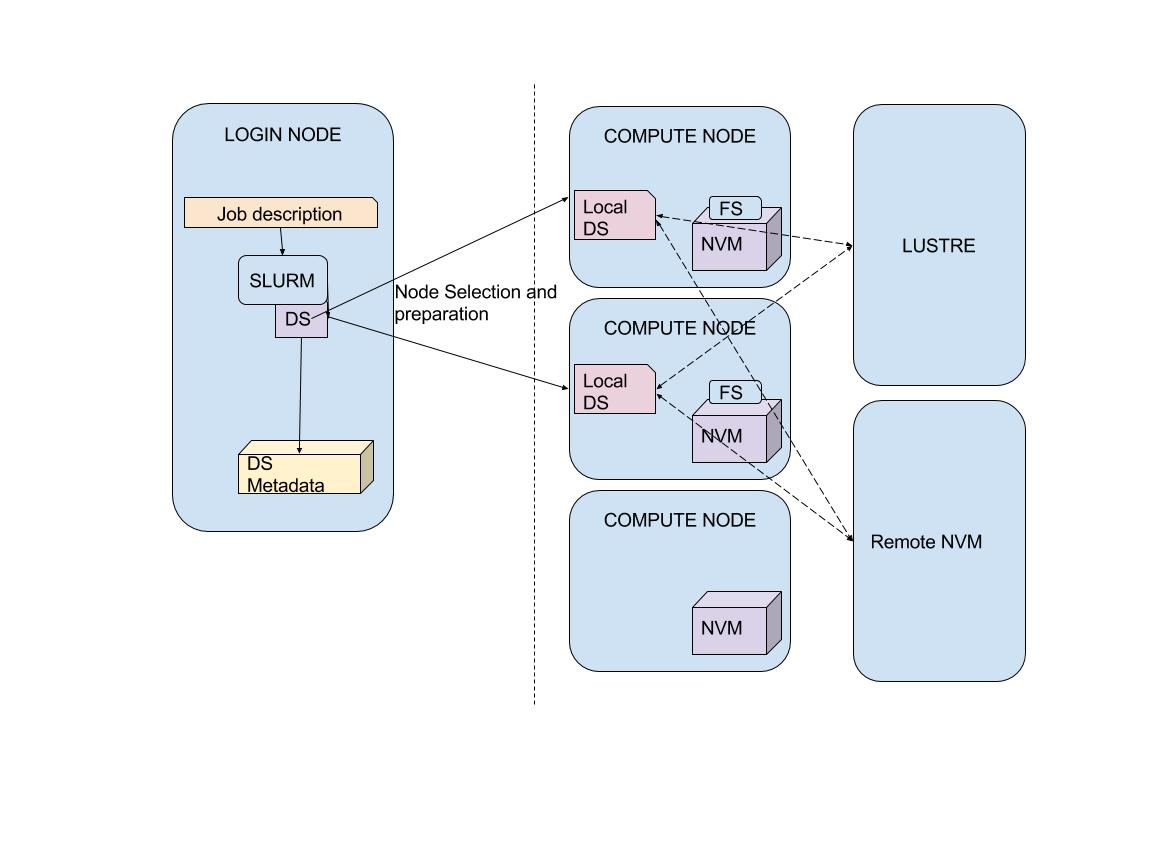Data Scheduler¶
The Data Scheduler (DS) is designed to work together with the Job Scheduler to allow for energy efficient and time efficient job execution. The main purpose of the Data Scheduler is to manage the transfer of data to nodes in preparation for the job execution (stage-in), and the transfer of data from the nodes upon completion (stage-out).
The DS operates as s Slurm plugin, mirroring the Slurm structure of a controller daemon (in the login node) and daemons in the computing nodes. In order for the Scheduler to be able to access the SCM, the NVDIMM namespace needs to be mounted with a file system.
The file systems used by the Scheduler are GekkoFS and EchoFS (see the section File Systems and Storage). Both systems make use of the large amount of memory available in the NVDIMMs to operate them as a burst-buffer: a relatively low latency intermediary between storage and the CPU’s main memory.
The basic principles of the Data Scheduler’s operation are shown in figure 1. The DS communicates with Slurm, receiving information on the job requirements as well as I/O hints (see below), with the NVDIMM file system, as well as with the Lustre file system that operates the storage space.
Once a job in the queue is deemed close enough to execution time, the relevant data are prefetched onto the node(s) selected for that job. Once the data is present, the job is executed. If the job reaches the front of the queue before the prefetching is completed, the job is pushed back in the queue.
Upon completion the DS writes data into persistent memory or transfers data to the parallel file system for storage, depending on job specifications.
